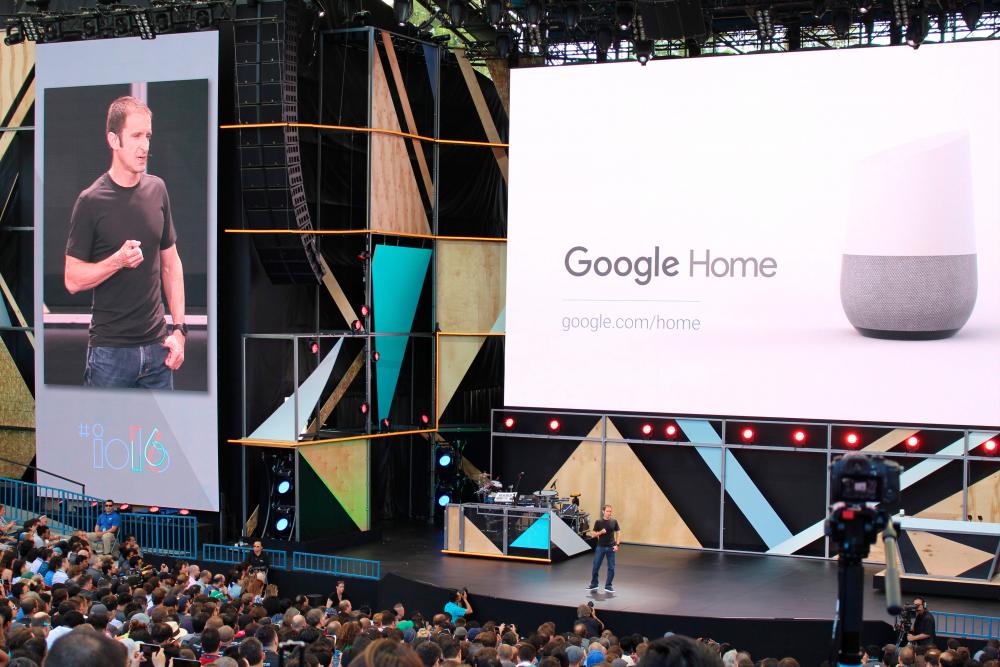PETALING JAYA: Technology has taken humanity into a realm unimaginable only in the more recent past.
Forget virtual meetings or self-driving cars. Think electronic babysitter or domestic maid, even automated dish-washing and grocery shopping.
These are possibilities that have become reality under the Internet of Things (IoT). The future is already here for the taking but, according to IT experts, there are major stumbling blocks in Malaysia.
The infrastructure is still not in place, and even if it is, not everyone can afford it.
IoT, as software engineer Sharvendren Kalaiselvam explained, is an evolution in internet technology that enables many devices to work on voice command.
The benefit of IoT is obvious ... it making daily life easier. For instance, Google Home or Amazon Alexa will stream music, make to-do lists or set alarms at your command.
At a more advanced level, expect it to check your fridge, draw up a grocery list, notify your local grocer and later see it delivered to your doorstep.
It also has the benefit of raising productivity by taking over simple automated tasks, enabling humans to focus on more productive endeavours.
According to Dr Amirrudin Kamsin, senior lecturer at Universiti Malaya’s Faculty of Computer Science and Information Technology, the use of IoT in Malaysian households is still underrated owing to its high cost.
“IoT is playing an increasingly important role in our lives, but not all Malaysians, especially those in the B40 group, can afford to install a complete IoT system in their homes,” he told theSun.
“It’s like solar energy. It is clean and good for the environment, but the start-up is costly. It’s the same with IoT, making it less accessible to many segments of Malaysian society,” Amirrudin said.
However, he believes it will not be difficult for Malaysians to acclimatise themselves to the new technology just like how the internet has already changed the way of life.
“Malaysians have increasingly become more receptive to new technology in the last decade, as social media and other similar platforms take over their lives,” he said.
He said the demand for IoT products has risen since the start of the Covid-19 pandemic that has significantly restricted physical mobility. “It has put working mothers in a difficult situation, having to juggle domestic responsibilities with professional duties. It’s like having to cook lunch and feed the baby while drafting a memo from the boss at the same time,” Amirrudin said. IoT, he added, can ease the workload for the person at the home front to enable her to better focus on the office work.
As Universiti Malaya’s Department of Artificial Intelligence senior lecturer Dr Zati Hakim Azizul Hasan explained, IoT at home requires two things: infrastructural investment and smart devices.
“A stable, continuous 2.4GHz wireless internet connection is essential, not streamyx or hotspots or even 5G,” she told theSun.
“There can be no compromise on 2.4GHz because it is the default frequency for most smart devices. The other infrastructure to invest in is neutral wiring that will link the smart devices to smart switches,” she said. “When everything is in place, all you need is a smartphone to do your bidding.”
Prices for smart devices are wide-ranging. For instance, Zati said, smart switches come at about RM60 for a set of four, but a Google Home or Alexa sells at RM450 to RM600.
A smart camera costs about RM150 each, but each household will likely need a few units to ensure adequate coverage.
The recurring cost is the monthly subscription or data plan.
While Amirrudin cautions against over-dependence on IoT, Sharvendren warns of a catch.
“Instead of walking to the light switch you just tell it to lit up the room. This is great. Only problem is it could make us lazy,” he quipped.














